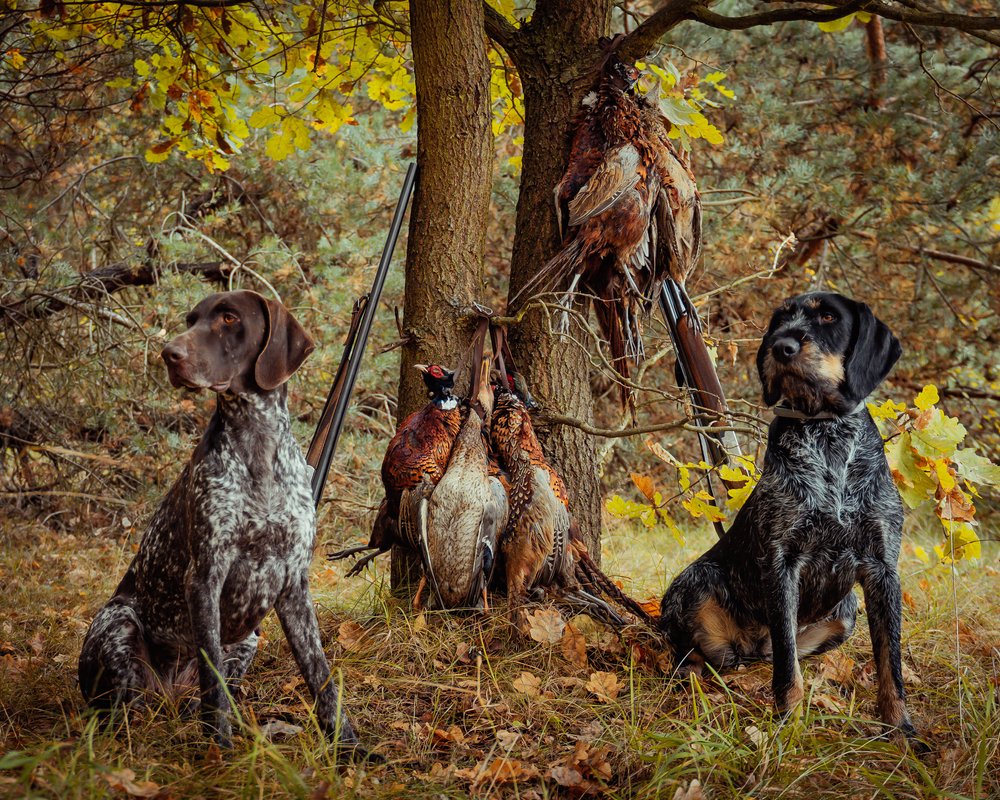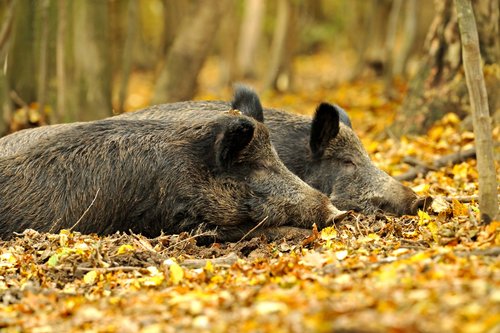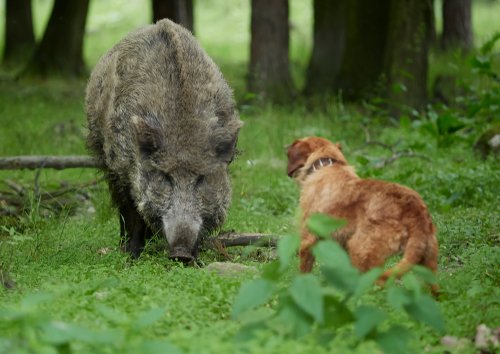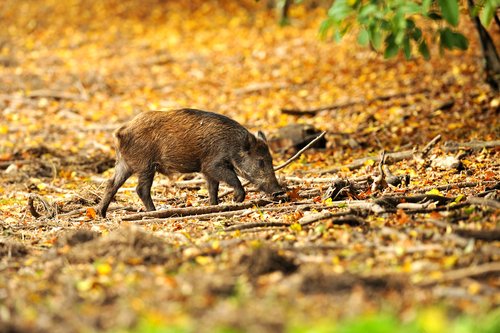Texas Hog Hunting: Find the Best Hog Hunting in Texas 2024
Texas hog hunting, a state renowned for its vast landscapes and rich wildlife, has witnessed a remarkable surge in the popularity of hog hunting in recent years.

With its wide open spaces and abundance of feral hogs, Texas has become a haven for those seeking an adrenaline-pumping hunting experience. Whether you’re an experienced hunter or just learning hog hunting in Texas, this state offers challenges and excitement that will keep you coming back for more.
With its wide open spaces and abundance of feral hogs, Texas has become a haven for those seeking an adrenaline-pumping hunting experience. Whether you’re an experienced hunter or just learning hog hunting in Texas, this state offers challenges and excitement that will keep you coming back for more.
Introduction
The presence of feral hogs in Texas can be traced back centuries to when Spanish explorers first brought domesticated pigs to the region. Over time, some escaped or were intentionally released into the wild, giving rise to what we now call feral hogs.
These adaptable creatures multiplied rapidly due to their high reproduction rates and lack of natural predators. Consequently, they have become highly invasive and destructive to agricultural lands and native wildlife habitats.
They also prey upon native species such as ground-nesting birds, reptiles, amphibians, small mammals, and even sea turtle eggs along coastal regions. Furthermore, their wallowing behavior disrupts soil stability and contaminates water sources with their waste.
Consequently, state agencies have recognized the need for population control measures through regulated hunting activities. As such, hog hunting provides hunters an exhilarating experience and plays a vital role in managing these invasive species and mitigating their environmental impact.
Description of Feral Hogs’ Physical Characteristics and Behavior
Feral hogs are robust, muscular creatures with a distinctive appearance. They typically have a long snout that ends in a slightly upturned nose, which helps them root around in the soil for food.
Their bodies are covered in coarse, bristle-like hair, ranging in color from black, brown, or gray to even reddish tones. These formidable beasts can grow to impressive sizes, weighing anywhere from 100 to over 400 pounds.
Their most striking feature is their curved tusks that protrude from their lower jaws and serve as formidable weapons during territorial disputes. In terms of behavior, feral hogs are highly adaptable and intelligent animals.
They possess an acute sense of smell and hearing, making them adept at detecting potential food sources. They are predominantly nocturnal creatures and can be active during the day if undisturbed.
Feral hogs are highly social animals that usually form small groups called sounders consisting of sows (females) and their piglets. Boars (males) tend to be more solitary but may join sounders during mating season or when food is abundant.
Why Feral Hog Populations Have Exploded in Texas
The explosive growth of feral hog populations in Texas can be attributed to numerous factors that have created the perfect storm for their proliferation. Firstly, feral hogs have no natural predators in Texas, allowing their numbers to multiply unchecked.
These adaptable creatures have also e thrived across various habitats due to the state’s diverse landscape. Furthermore, feral hogs reproduce rapidly and prolifically.
Sows can give birth twice a year on average, with litters ranging from 4 to 12 piglets each time. This high reproduction, and with a relatively short gestation, contributes significantly to population growth.
Another key factor is the ample availability of food sources. Feral hogs are opportunistic omnivores, devouring crops, plant roots, acorns, nuts, insects, and even small mammals.
Texas, an agricultural hub rich in natural resources, is abundant for these voracious eaters. The lack of effective control measures and regulations in the past allowed feral hog populations to spiral out of control.
While efforts are being made to manage the population and minimize their ecological impact, their res, resilience, and adaptability continue to present challenges for hunters and wildlife management authorities.
Understanding these physical characteristics and behavior, and as the reasons behind the population explosion, the ion can help hunters better prepare themselves when venturing into the exciting realm of Texas hog hunting.
Hunting Regulations and Licenses
Overview of hunting seasons and bag limits for feral hogs
Regarding hunting in Texas, feral hogs have become a significant target for enthusiasts. These creatures reproduce rapidly and cause extensive damage to agricultural lands and natural habitats.
To manage the hog population, Texas has established hunting seasons and bag limits specifically designed for these wild beasts. The good news is that there is no closed season for hog hunting in Texas, meaning you can pursue them throughout the year.
However, certain counties enforce additional restrictions on when and how you can hunt hogs to maintain ecological balance. It’s crucial to check with local authorities or the Texas Parks and Wildlife Department before embarking on your hog-hunting adventure.
Explanation of the different types of hunting licenses available
Before you embark on your thrilling Texas hog hunting expedition, it is essential to understand the different types of licenses available. The most common option for non-residents is the Non-Resident General Hunting License, which allows you to hunt various game animals, including feral hogs, during their respective seasons.
If you’re a frequent visitor or plan to hunt multiple times within a year, consider purchasing an Annual Hunting License instead. Additionally, youth hunters (17 years old or younger) can acquire a Youth Hunting License at a reduced cost.
It’s important to note that while these licenses grant access to public lands across Texas open for hunting, private landowners may require separate permissions or charge additional fees. Always respect landowner rights and ensure compliance with regulations before setting foot on private property.
Popular Hunting Methods
Traditional methods such as spot-and-start and hunting
A few tried and true MSs regarding Texas hogs have been used for ages. One of the most popular techniques is spot-and-stalk hunting. This method involves quietly moving through the brush or fields, scanning for any signs of feral hogs.
Once you spot a group of hogs, you carefully approach using whatever cover you can find to get within shooting range. It requires patience, stealth, and keen observation skills.
Another traditional method that many hunters swear by is stand hunting. This involves finding a strategy, such as near a known hog trail or feeding area and setting up a concealed stand or blind.
Once in position, the hunter waits patiently for hogs to come into range before shooting. This technique is particularly effective when combined with baiting strategies using corn feeders or specialized attractants.
More adventurous methods like helicopter hog hunting
For those seeking an exhilarating experience, the helicopter hog hunt recently gained popularity. This daring method involves flying over areas known for high feral hog populations in a helicopter while armed with appropriate firearms. From the air, hunters have an advantage as they can cover large areas quickly and locate hogs more easily.
Once spotted from above, sharpshooters aim at the pesky pigs from their aerial vantage point. The adrenaline rush of hovering above the landscape while pursuing swift-moving targets adds great excitement to the hunt.
While these unconventional methods provide unique opportunities for hunters to test their skills and enjoy unparalleled thrills in Texas, hog hunting’s advice to keep safety at the forefront is essential. Always follow local regulations and guidelines when engaging in hunting activity.
Best Weapons for Hog Hunting
Firearms, bows, and crossbows for hog hunting
You have various options for the best weapon for Texas hog hunting. Firearms are the most popular choice among hunters due to their power and versatility. Shotguns with slugs or rifles chambered in calibers like .223 Remington or .308 Winchester are commonly used to take down hogs effectively.
However, bows and crossbows add excitement if you’re looking for a more challenging and thrilling hunting experience. The silent draw and accurate shots from a compound bow or a modern crossbow can make hog hunting in Texas an unforgettable adventure.
Recommended calibers, arrows, and broadheads
Regarding firearms, certain calibers have proven effective for hog hunting in Texas. The .223 Remingn is chosen due to its flat trajectory and sufficient power for medium-sized hogs.
For larger hogs or when hunting in dense brush areas where shots may be closer range, the .308 Winchester provides reliable stopping power. As for archery equipment, carbon arrows with fixed-blade broadheads are commonly used by bowhunters targeting hogs.
Broadheads with 2-4 cutting blades that generate massive wound channels are recommended to ensure quick kills on these tough animals. When selecting your choice for Texas hog hunting, it’s essential to consider what suits your preferences and skill level best.
Firearms offer reliability and utility, while bows and crossbows add challenge and excitement. Remember to choose the right caliber or arrow type depending on the size of the hogs you’ll encounter during your hunts in Texas.
Cloak Yourself in Camo: Blend In blending into the surroundings is key when!
When it comes to hog hunting in the wild plains, it is key. The right camouflage clothing will help you become one with the environment, making you virtually undetectable by those wily hogs.
Opt for patterns that match the foliage and terrain of your hunting area, such as woodland or brush camo. Investing in quality gear like a camo jacket, pants, and hat will give you a tactical advantage and protect you from thorny bushes and pesky mosquitoes that seem to have a personal vendetta against hunters.
Boots Made for Stalking: Having reliable boots is essential!
It is essential when trekking through muddy swamps or dense forests during your Texas hog hunting. Look for waterproof boots that provide excellent traction on uneven terrain.
You’ll be grateful for their support as you stalk your prey tirelessly through the wilderness. And don’t forget to break them in before hitting the field; blisters have no place on an epic hog hunt!
A Sharp Blade Never Fails: Knives Are Your Trusty Companions
A good knife is more than just a tool; it’s an extension of yourself during Texas hog hunting excursions. A sharp and durable hunting knife can assist you with field dressing your prized catch or cutting through thick vegetation obstructing your path. Choose fixed-blade knives since they offer reliability and strength when dealing with tough knives in the wilds of Texas.
The Sweet Smell of Success: Scent Control Products
Mastering Scent Control: Why It Matters
Scent control is crucial in a battle of wits between hunter and prey. Feral hogs possess an exceptional sense of smell, mimicking your scent footprint. Scent control products such as scent-free soaps, shampoos, and detergents help you eliminate those human odors that could otherwise spook your quarry. Investing in scent-eliminating sprays, or odor-absorbing clothing can significantly improve your chances of getting close to those elusive hogs without raising any suspicions.
A Spritz of Success: Cover Scents
To further enhance your chances of a successful hog hunt in Texas, consider using cover scents that mimic natural odors found in the wild. These scents can help mask any remaining human smells, adding authenticity to your presence in the hog’s habitat. Choose cover scents like pine or earthy aromas commonly found in nature. Remember not to overdo it; a little goes a long way.
With the right gear and scent control products by your side, you’ll be fully prepared for unforgettable Texas hog hunting experiences while ensuring you stay one step ahead of these cunning creatures in their natural dom. So, suit up, equip yourself with reliable gear, and unleash your inner hunter as you explore the untamed landscapes that make Texas one of the ultimate destinations for passionate hunters!
Hog Hunting Techniques
Baiting Strategies
Corn Feeders can be used for baiting strategies, significantly enhancing your chances of a successful hunt. These feeders serve as irresistible food sources, attracting hogs to a specific location and increasing the likelihood of a shot opportunity. Hunters often set up game cameras near the corn feeders to monitor hog movements and determine the optimal time for their hunt. Alternatively, specialized attractants can be employed to lure hogs within range. These attractants usually come from scented baits or lures that mimic delicious food sources for feral hogs.
By strategically placing these attractants near your hunting area, you create an irresistible aroma that draws hogs closer, increasing your chances of a successful encounter. It is important to note that some specialized attractants are designed specifically for hog hunting, packed with enticing ingredients like fermented grains or strong aromatics that capture a wild hog’s attention.
Effective Calling Techniques
In addition to baiting strategies, calling techniques can be instrumental in luring hogs within shooting range during your Texas hog hunting adventure. Hog calls effectively mimic sounds made by distressed or feeding pigs; nearby feral hogs are curiosity and territorial hogs.
The most common types of calls include mouth-blown calls, electronic callers, and even smartphone apps designed specifically for hog hunters. To maximize your chances of success when using, you must familiarize yourself with different pig vocalizations. Recognizing various grunt patterns or squeals can help you adjust your calling technique accordingly. Start with soft grunts and escalate if no response is elicited.
Additionally, incorporating intermittent pauses between calls can mimic the natural rhythm of a group of hogs feeding or moving, further enhancing the authenticity of your calling sequence. With baiting strategies and effective calling techniques, you’ll be well-equipped to navigate the Texas hog hunting dance confidently.
Remember to adapt your approach based on your hunting area’s specific conditions and behavior, as hogs can be unpredictable. By employing these techniques, you increase your chances of bringing home a trophy hog while immersing yourself in the exhilarating world of Texas hog hunting.
Hunting Dogs for Hog Hunting
Popular dog breeds used in hog hunting, like Catahoulas
Regarding hog hunting in Texas, having a trusty four-legged companion by your side can make all the difference. Several dog breeds have proven their worth in this adventurous pursuit.
Two popular breeds among seasoned hunters are Catahoulas and Black Mouth Curs. Known for their tenacity and endurance, Catahoulas are a favorite choice due to their strong herding instincts and ability to work independently.
On the other hand, Black Mouth Curs excel at tracking and baying hogs, displaying unwavering loyalty and bravery during the hunt. Both these breeds possess the necessary traits to handle the rugged terrain of Texas and take on wild hogs with vigor.
Training tips for using dogs to track, bay, or catch wild hogs
Training a dog for hog hunting requires patience, consistency, and specialized techniques tailored to the dual breed’s strengths. To train dogs to track racking wild hogs, introduce them to scents associated with hogs, such as hog hair or urine. Gradually increase exposure so that they become familiar with the scent.
This will help them develop their scent-tracking abilities over time. For teaching dogs how to bay hogs (cornering them while barking), it is crucial to expose them gradually to live or processed hog scent while reinforcing commands like “bay” or “hold. Positive reinforcement techniques such as treats or praise can effectively shape desired behaviors.
To train dogs specifically for catching hogs, it is essential to prioritize time. Start with mock scenarios using training aids like decoys before gradually introducing them to real-life situations and controlled environments.
Remember that each dog is unaware of learning capabilities and temperament, so it is crucial to be patient and adapt your training methods accordingly. Seeking guidance from experienced hog hunters or professional trainers can also prove invaluable in honing your dog’s skills for Texas hog hunting adventures.

Texas Hog Hunting Hotspots
Regarding hunting in several regions, stands stand hog-hunting hunting hotspots. One of the most renowned areas is the Pineywoods region in East Texas. With its dense forests and abundant water sources, this area provides an ideal habitat for feral hogs to thrive.
Another hotspot is the Hill Country, characterized by its rugged terrain and diverse vegetation, making it a haven for hogs to roam freely. Central Texas, particularly around the Brazos River, is known for its thriving feral hog populations.
The vast agricultural lands in West Texas offer ample food resources for hogs, resulting in significant numbers found across this region. South Texas boasts a mix of brushlands and agricultural fields that attract large groups of hogs year-round.
Description
The Pineywoods region in East Texas encompasses an extensive area with dense forests stretching across multiple counties like Polk and San Jacinto, where rolling hills blanketed with pine trees and understory vegetation provide lush cover for feral hogs.
Moving towards the Hill Country, picturesque landscapes unfold with rugged limestone hillsides covered in oak trees and cacti-filled valleys offering ample feeding opportunities for these adaptable creatures. Central Texas presents a unique blend of river bottoms and fertile farmlands where hogs can indulge in seasonal crops throughout the year.
Heading westward into vast West Texas brings mesquite thickets and endless support to sizable hog populations due to abundant food sources such as prickly pear cactus pads and native grasses. South Texas showcases brushlands composed of dense mesquite stands interspersed with open fields where corn feeders lure herds of feral hogs seeking nourishment.
Conclusion
Texas hog hunting tips and hotspots go hand in hand, as the Lone Star State has many prime locations for hunting feral hogs. Whether you prefer the dense forests of East Texas, the rugged terrains of the Hill Country, or the vast agricultural lands of Central and West Texas, there is a hotspot perfectly suited to your hunting preferences.
With their ever-growing populations and adaptability to various habitats, feral hogs provide ample opportunities for hunters seeking thrilling, adventurous rewards. So gear up, explore hog-hunting-hunting hotspots, and embrace the excitement that Texas hog hunting has to offer!





